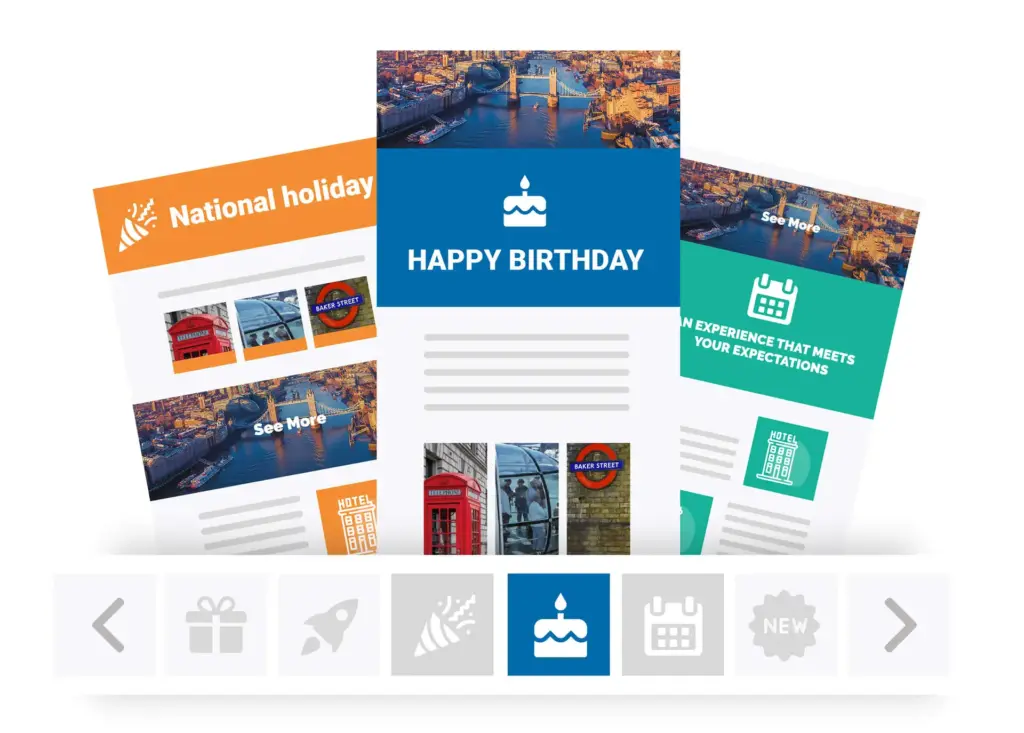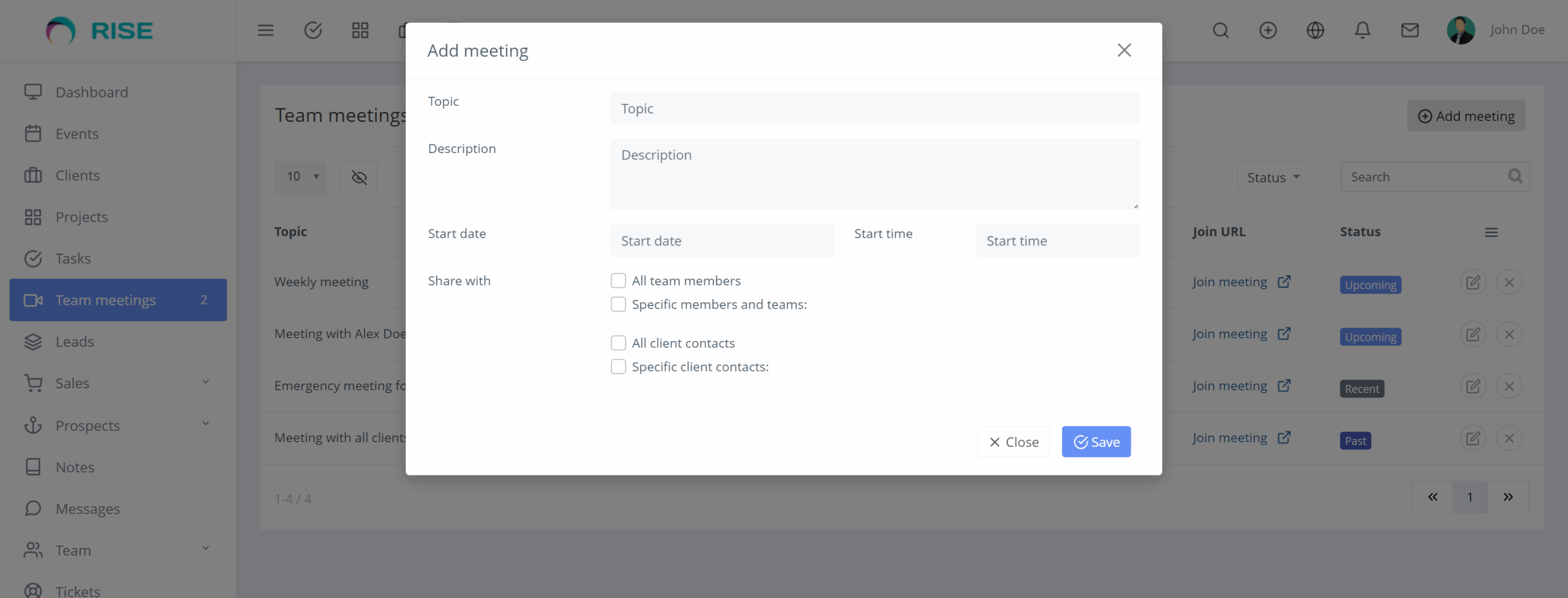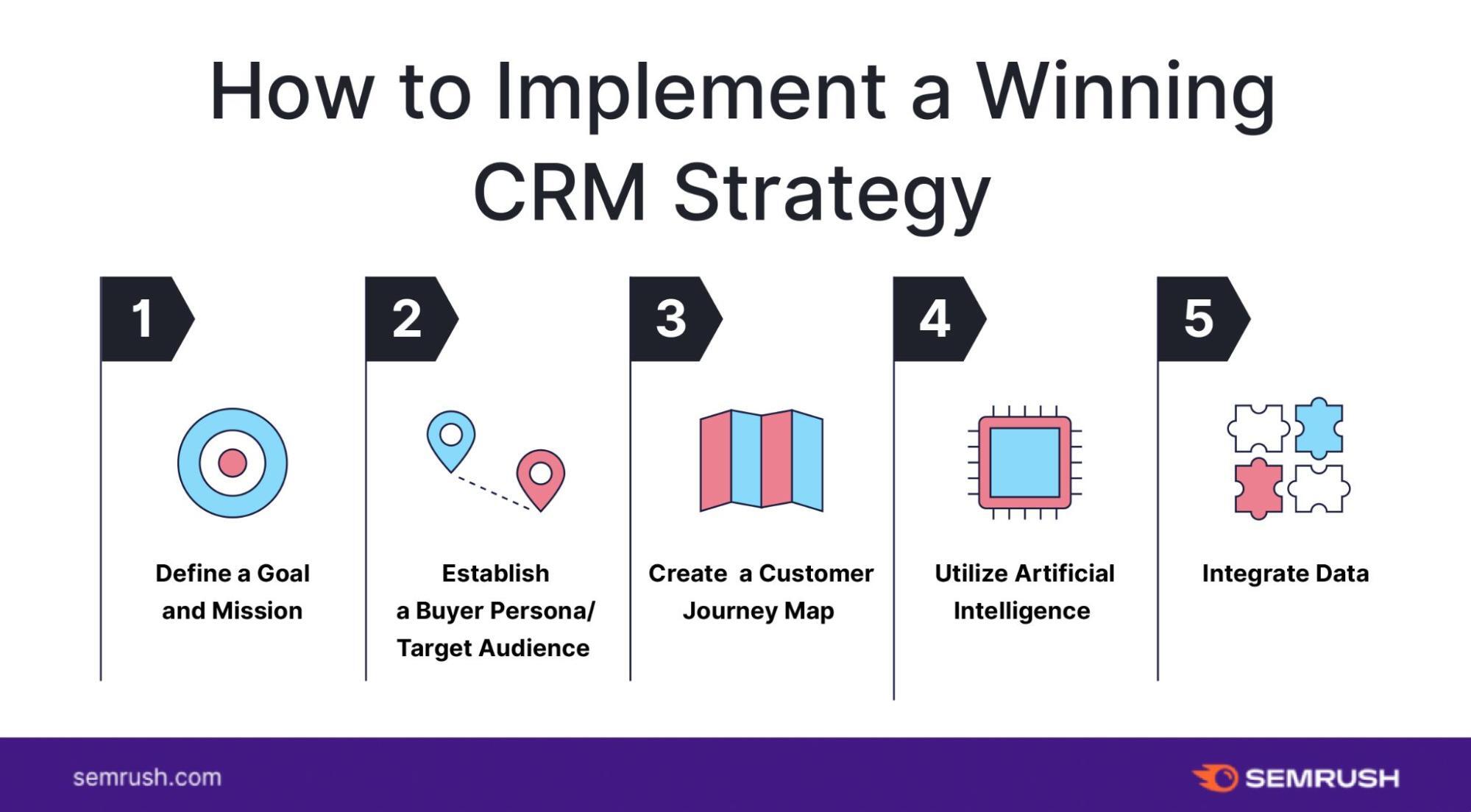
Boost Your Business: A Comprehensive Guide to CRM Marketing Newsletters
In today’s fast-paced business world, staying connected with your customers is more critical than ever. One of the most effective ways to nurture these relationships and drive sales is through CRM (Customer Relationship Management) marketing newsletters. But what exactly are they, and how can you leverage them to their full potential? This comprehensive guide will walk you through everything you need to know about CRM marketing newsletters, from the basics to advanced strategies, ensuring you can create newsletters that resonate with your audience and deliver tangible results.
What is a CRM Marketing Newsletter?
At its core, a CRM marketing newsletter is a regular email publication sent to your customers and prospects, using data gathered and managed within your CRM system. This data allows you to personalize the content, target specific segments of your audience, and ultimately, deliver more relevant and engaging information. Unlike generic email blasts, CRM newsletters are designed to be highly targeted, based on customer behavior, preferences, purchase history, and other valuable insights.
Think of it as a personalized conversation, but on a much larger scale. You’re not just sending out a blanket message; you’re tailoring the content to resonate with each individual or group, increasing the likelihood of engagement and conversion.
Why Are CRM Marketing Newsletters Important?
The benefits of CRM marketing newsletters are numerous, making them a cornerstone of any successful marketing strategy. Here are some of the key advantages:
- Enhanced Customer Engagement: Personalized content keeps your audience interested and invested in your brand.
- Improved Customer Retention: Regular communication builds loyalty and encourages repeat business.
- Increased Sales and Conversions: Targeted promotions and product recommendations drive revenue.
- Better Customer Segmentation: CRM data allows you to segment your audience effectively, ensuring the right message reaches the right people.
- Data-Driven Insights: Track email performance to gain valuable insights into customer behavior and refine your strategy.
- Brand Building: Consistent communication reinforces your brand’s presence and values.
Key Components of a Successful CRM Marketing Newsletter
Creating a successful CRM marketing newsletter involves more than just sending out emails. It requires careful planning, thoughtful content creation, and a deep understanding of your audience. Here are the essential components:
1. Audience Segmentation
Before you even start writing, you need to understand your audience. CRM systems allow you to segment your customers based on various criteria, such as demographics, purchase history, website activity, and engagement with previous emails. This segmentation is the foundation of personalization. For example, you might create segments for:
- New Customers: Welcome emails, onboarding guides, and introductory offers.
- Loyal Customers: Exclusive discounts, early access to new products, and loyalty program updates.
- Inactive Customers: Re-engagement campaigns with special offers to bring them back.
- Specific Product Users: Tips, tutorials, and related product recommendations.
The more granular your segmentation, the more effective your newsletters will be.
2. Compelling Content
The content is king! Your newsletter should provide value to your audience. Avoid simply pushing products; instead, focus on offering helpful information, solving problems, and providing entertainment. Consider including:
- Industry News and Trends: Keep your audience informed about the latest developments in your industry.
- Product Updates and Announcements: Highlight new features, product launches, and improvements.
- Exclusive Offers and Promotions: Offer discounts, special deals, and early access to sales.
- Customer Success Stories: Showcase how your product or service has helped others.
- Educational Content: Share tips, tutorials, and guides related to your industry.
- Behind-the-Scenes Content: Give your audience a glimpse into your company culture.
3. Personalization
Personalization is the key to making your newsletter feel less like a broadcast and more like a conversation. Use the data from your CRM to personalize the following:
- Subject Lines: Use the recipient’s name or reference their recent activity.
- Email Body: Tailor the content to their interests and needs.
- Product Recommendations: Suggest products based on their purchase history or browsing behavior.
- Call-to-Actions (CTAs): Customize the CTAs to encourage specific actions, such as visiting a product page or making a purchase.
4. Design and Formatting
A visually appealing newsletter is crucial for grabbing attention and keeping readers engaged. Consider these design elements:
- Branding: Use your brand colors, logo, and fonts to create a consistent look and feel.
- Mobile-Friendly Design: Ensure your newsletter is optimized for mobile devices.
- Clear and Concise Layout: Use headings, subheadings, and bullet points to make the content easy to scan.
- High-Quality Images: Use visually appealing images and graphics to enhance your content.
- Whitespace: Use whitespace to improve readability and avoid overwhelming the reader.
5. Call-to-Actions (CTAs)
Every newsletter should have a clear call-to-action, guiding the reader to take the desired action. Make sure your CTAs are:
- Clear and Concise: Use action-oriented language like “Shop Now,” “Learn More,” or “Get Started.”
- Visually Prominent: Use buttons or other design elements to make your CTAs stand out.
- Relevant to the Content: Ensure your CTAs are aligned with the information in the newsletter.
- Trackable: Use UTM parameters to track the performance of your CTAs.
6. Timing and Frequency
The timing and frequency of your newsletters can significantly impact their effectiveness. Consider the following:
- Optimal Send Times: Test different send times to determine when your audience is most likely to open and engage with your emails.
- Frequency: Avoid overwhelming your audience with too many emails. Find a balance that keeps you top-of-mind without being intrusive. Weekly or bi-weekly newsletters are often a good starting point.
- Consistency: Establish a regular sending schedule so your audience knows when to expect your emails.
7. Testing and Optimization
Never assume you’ve got it perfect on the first try. A/B testing is essential for optimizing your newsletters. Test different:
- Subject Lines: Experiment with different subject lines to see which ones get the highest open rates.
- Content: Try different content formats, such as articles, videos, and infographics.
- CTAs: Test different button colors, text, and placement.
- Send Times: Experiment with different days and times to find the optimal send times.
- Segmentation: Refine your segmentation strategy to improve targeting.
Analyze your results and make adjustments based on your findings. Continuous optimization is key to maximizing the effectiveness of your newsletters.
Choosing the Right CRM for Your Newsletter Marketing
Selecting the right CRM system is crucial for successful CRM marketing. There are many CRM platforms available, each with its own strengths and weaknesses. When choosing a CRM, consider the following factors:
- Features: Look for features that support email marketing, such as segmentation, personalization, automation, and reporting.
- Integration: Ensure the CRM integrates with your other marketing tools, such as your website, social media platforms, and email service provider.
- Scalability: Choose a CRM that can grow with your business.
- Ease of Use: Select a CRM that is user-friendly and easy to navigate.
- Pricing: Compare the pricing of different CRM platforms and choose one that fits your budget.
- Customer Support: Ensure the CRM provider offers excellent customer support.
Some popular CRM platforms include:
- HubSpot: Known for its comprehensive marketing tools, including email marketing, and user-friendly interface.
- Salesforce: A powerful platform with a wide range of features, but can be complex for beginners.
- Zoho CRM: A cost-effective option with a good balance of features and ease of use.
- Pipedrive: Focused on sales, with strong features for managing leads and deals.
Best Practices for CRM Marketing Newsletters
To maximize the impact of your CRM marketing newsletters, follow these best practices:
- Build a Strong Email List: Encourage sign-ups through website forms, lead magnets, and other promotional efforts.
- Provide Value: Focus on providing valuable content that resonates with your audience.
- Personalize Your Emails: Use data from your CRM to personalize your subject lines, content, and CTAs.
- Optimize for Mobile: Ensure your newsletters are responsive and look great on all devices.
- Use a Clear and Concise Design: Make your content easy to read and scan.
- Test and Track Your Results: Continuously monitor your email performance and make adjustments based on your findings.
- Comply with Email Marketing Regulations: Ensure you comply with all relevant regulations, such as GDPR and CAN-SPAM.
- Segment Your Audience: Don’t send the same newsletter to everyone. Segment your audience based on their interests and behaviors.
- Use a Consistent Brand Voice: Maintain a consistent tone and style across all your communications.
- Respect Your Subscribers’ Preferences: Provide an easy way for subscribers to unsubscribe from your emails.
Examples of Effective CRM Marketing Newsletters
Let’s look at some examples of how businesses are successfully using CRM marketing newsletters:
E-commerce Store
An e-commerce store might send a newsletter to customers who have abandoned their shopping carts. The newsletter could include a reminder of the items left in the cart, along with a special offer or discount to encourage them to complete their purchase. They might also send product recommendations based on browsing history or past purchases.
Software Company
A software company could use a CRM newsletter to announce new features, share product updates, and provide helpful tutorials. They could segment their audience based on the products they use and send targeted content relevant to their needs. They might also offer exclusive discounts to existing customers.
Service-Based Business
A service-based business, such as a marketing agency, could use a CRM newsletter to share industry insights, case studies, and special offers. They could segment their audience based on their industry or areas of interest and send targeted content relevant to their needs. They could also use the newsletter to promote their services and generate leads.
Measuring the Success of Your CRM Marketing Newsletters
To understand if your CRM marketing newsletters are effective, it’s crucial to track key metrics. Here are some essential metrics to monitor:
- Open Rate: The percentage of subscribers who open your email. A good open rate varies depending on your industry, but aim for above average, typically between 15-25%.
- Click-Through Rate (CTR): The percentage of subscribers who click on a link in your email. A high CTR indicates that your content and CTAs are engaging.
- Conversion Rate: The percentage of subscribers who complete a desired action, such as making a purchase or filling out a form.
- Unsubscribe Rate: The percentage of subscribers who unsubscribe from your email list. A high unsubscribe rate may indicate that your content is not relevant or that you are sending too many emails.
- Bounce Rate: The percentage of emails that are not delivered. A high bounce rate can indicate that your email list is outdated or that you have typos in the email addresses.
- List Growth Rate: The rate at which your email list is growing.
- Return on Investment (ROI): The revenue generated from your email marketing campaigns, compared to the cost of running the campaigns.
Most CRM and email marketing platforms provide detailed analytics dashboards that allow you to track these metrics and gain insights into your email performance. Use these insights to refine your strategy and improve your results.
Common Mistakes to Avoid in CRM Marketing Newsletters
Even with the best intentions, it’s easy to make mistakes when creating CRM marketing newsletters. Here are some common pitfalls to avoid:
- Sending Too Many Emails: Overwhelming your audience can lead to unsubscribes and a decline in engagement.
- Sending Irrelevant Content: Failing to segment your audience and sending generic content can lead to low open and click-through rates.
- Neglecting Personalization: Not using the data in your CRM to personalize your emails can make them feel impersonal and less engaging.
- Poor Design and Formatting: A poorly designed email can deter readers from engaging with your content.
- Ignoring Mobile Users: Not optimizing your emails for mobile devices can lead to a poor user experience.
- Lack of a Clear CTA: Failing to include a clear and concise call-to-action can hinder conversions.
- Not Testing and Optimizing: Failing to test different subject lines, content, and CTAs can prevent you from maximizing your results.
- Ignoring Email Marketing Regulations: Failing to comply with regulations such as GDPR and CAN-SPAM can lead to legal issues.
The Future of CRM Marketing Newsletters
CRM marketing newsletters will continue to evolve, driven by advancements in technology and changing customer preferences. Here are some trends to watch:
- Hyper-Personalization: Leveraging AI and machine learning to create highly personalized experiences.
- Interactive Content: Incorporating interactive elements, such as polls, quizzes, and surveys.
- Video Integration: Using video to enhance engagement and provide more dynamic content.
- AI-Powered Automation: Using AI to automate tasks such as content generation, personalization, and send-time optimization.
- Focus on Privacy: Prioritizing data privacy and transparency.
By staying ahead of these trends, you can ensure that your CRM marketing newsletters remain effective and relevant.
Conclusion
CRM marketing newsletters are a powerful tool for building relationships, driving sales, and growing your business. By understanding the key components, following best practices, and continuously optimizing your strategy, you can create newsletters that resonate with your audience and deliver exceptional results. Embrace the power of personalization, provide valuable content, and always strive to improve. The future of email marketing is bright, and with a well-executed CRM marketing newsletter strategy, you can position your business for success.


